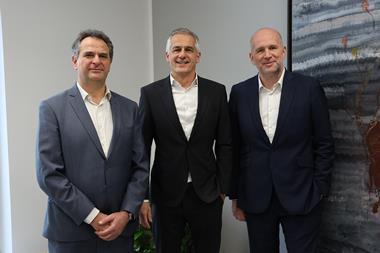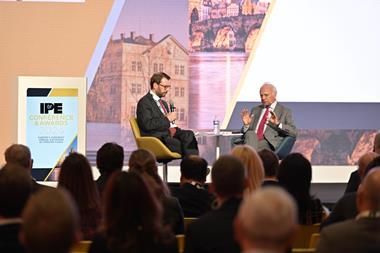The two principal growth capital markets, China and India, continue to account for the majority of deal volume in Asia, followed by buyouts in more developed countries, such as Japan, South Korea and Australia. 2009 was a busy year for exits, with proceeds exceeding 2008 levels. Year to date in 2010, there have already been quite a few larger sized trade sale exits announced. With a robust IPO pipeline, 2010 would hopefully be able to continue the trend. One thing to note is that most of the 2009 exit proceeds were generated by a relatively small pool of GPs in Asia. That means manager selection is still the key criterion for generating alpha in this region.
Despite a 59% decline in Asian private equity transaction volume in 2009, the region has seen a sharp spike in its share of worldwide private equity investment activities (from 5% in 2007 to 24% in 2009) as other regions have declined even faster. This illustrates the benefit of diversification, where an allocation to Asian private equity can help to steady the deployment of capital.
The resilience of the Asian private equity market can also be shown in its share of total Asian M&A transaction volume.
Investment and fundraising trends in Asia
Last year marked the first decline in annual PE fundraising in Asia since 2002. Several GPs had to reduce their target fund sizes, extend fundraising timetables or postpone fund launches. USD 23bn was raised in 2009, representing a 54% decrease compared to 2008.
Growth capital funds dominated the 2009 fund pool, accounting for half of the funds raised, followed by buyout funds (33%, the smallest pool since 2004), venture funds (7%) and others (10%). The trend underscores LPs’ preference for growth capital funds in Asia, especially the ones in China and India. In terms of geography, country-focused funds for the first time surpassed pan-Asian funds, with China and India funds alone accounting for 58% the pool of fresh capital in 2009.
The number of funds raised decreased by 34% to 136. The average fund size raised was USD 170mn in 2009, which was quite a sharp adjustment relative to the USD 245mn average fund size in 2008. 2009 only saw 5 funds in the USD 1bn+ segment being raised. The largest fund raised in 2009 was China’s Military Industrial Investment Fund (a RMB-denominated PE fund raised from domestic institutional investors in China and managed by a state-owned GP), with a fund size of USD 2.9bn (and the 2nd largest fund being raised by MBK Partners, a South Korea-based GP). Of the 5 funds raised, 4 have fund sizes < USD 2bn. 4 of them were country specific funds, one each in China, S. Korea, Japan and India.
Over the years, many global PE firms have established offices in Asia to make local
investments and/or assist existing foreign portfolio companies to expand in Asia. Some have even raised Asia-dedicated funds. For firms that invest in growth capital or buyouts, many of them have expanded their franchise in Asia and strengthened their local teams. This being said, one also notices that firms with a particular focus on distress/turnarounds are not as successful as they originally expected in Asia and have been downsizing their operations in the region.
Even though it was a subdued market for both fundraising and new investments, 2009 was an active period for exits. Close to $15bn was returned to LPs, representing a 44% increase from 2008 and accounted for one of the best exit years in Asian private equity. However, the valuation trend has not benefited investors during this turbulent year with average exit multiple dropping to 2x compared to 3x+ invested capital in 2008 (excluding write-offs that would lead to lower exit multiple numbers). For the first time, 2009 witnessed 4 $1bn+ exits with 2 from Japan, 1 from China and 1 from Australia.
IPO window re-opened in 2009 and beyond
China re-opened its domestic IPO market in June 2009 and since then had recorded a number of listings (with lock-up period lowered to 1 year vs. 3 years previously for minority shareholders). Though this is still a nascent exit channel for PE firms in China, many of the GPs express high confidence in this exit route going forward. From discussions with different GPs, the IPO pipeline is strong in Asia, especially in China and India.
In contrast, trade sales continued to generate the most proceeds for exits. Year to date in 2010, there are already quite a number of large-sized trade sale exits announced (although not all completed yet). As multinational companies continue to look to the East to generate growth and manage costs, 2010 is expected to be another strong year for trade sale exits.
Divestitures in the buyout stage continue to drive exits in terms of volume
With regards to the sources of exits, there has been a continuing increase of divestitures in the buyout stage that accounted for 57% of realized capital in 2009. Yet, these exit amounts were generated by only a handful of seasoned PE firms, indicating that there is still a relatively small pool of talented/experienced GPs in Asia.
China
China’s deal volume was the most resilient last year within Asia. RMB funds raised from domestic investors are in full swing for both local (e.g. CDH, Hony Capital) and foreign (e.g. Blackstone, Carlyle) PE firms. Since the market began in 2006, last year was the first where the domestic RMB fund pool exceeded those denominated in foreign currencies. It remains to be seen how new domestic firms (nascent teams with no/short track record) can effectively compete for quality assets with the foreign players and established local players.
India
PE firms need to compete with the public equity market as the sellers (typically entrepreneurs requiring fresh growth capital) can list their companies relatively easily in domestic stock exchanges. The quick recovery in the public equity market prevented PE firms from buying cheap, driving down PE transaction volume by close to two-thirds in 2009.
Recently, there has been huge team turnover at various local and foreign firms as senior PE managers become more entrepreneurial themselves and start 1st-time firms. In SCM’s view, the Anglo-Saxon legal framework and English-speaking language are among reasons that attract foreign LPs’ and GPs’ capital into the Indian PE market.
Where to put the money?
Though the Asian private equity market rapidly matures, we continue to believe that the biggest bottleneck for investors remains the relatively scarce supply of seasoned, stable teams that possess steady track records. As such, manager selection is yet again the key criterion for generating excess return for LPs. By stage, SCM believes Asian buyouts and larger growth capital are the most interesting private equity segments for the foreseeable future as deal volumes will probably increase along with increasing acceptance of private equity as a capital source.












No comments yet